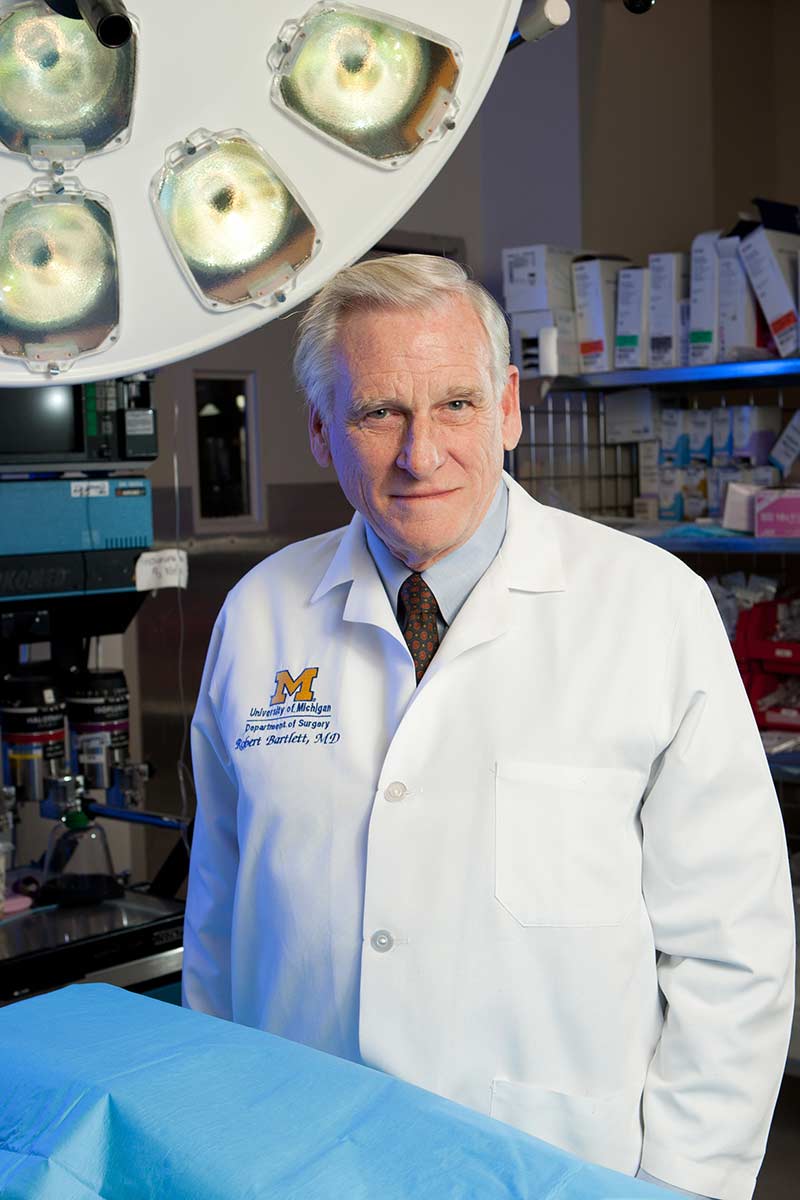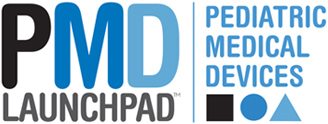A pioneer in the field of neonatal critical care, Dr. Robert Bartlett is best known for developing the lifesaving heart-lung technology known as extracorporeal membrane oxygenation (ECMO).

Dr. Robert Bartlett
Pediatric Extra Corporeal Membrane Oxygenation is a complex device consisting of tubes, pumps, oxygenators, heaters, and filters that can perform the work of a patient’s heart and lungs, and exists as final salvage treatment where all other medical and surgical therapy has failed. The idea of cardiopulmonary bypass for use during open heart surgery was first invented by Dr. John Gibbon in the 1950s. The use of these heart-lung machines was limited in scope primarily to cardiac surgery and had only marginal success during the 1960s and early 1970s. The pioneering work of thoracic surgeon Dr. Robert Bartlett revived interest in the device when he had the brilliant insight to reach beyond surgical applications and utilize the system in patients with severe lung disease. When all standard medical and surgical therapy failed, ECMO could buy patients time to allow their heart and lungs to heal and recover function.¹
Esperanza, which means “hope” in Spanish, was born to a newly immigrated mother. Esperanza was born with severely low oxygen levels following an uncomplicated pregnancy and delivery. She was transferred to Children’s Hospital of Orange County, where she faced a dim prognosis. Despite maximal intensive care and ventilator support, her oxygen levels had dropped below a level compatible with life, and her situation was deemed unrecoverable. As a last-ditch effort, Dr. Bartlett’s team, who had been studying development of the ECMO membrane lung, connected Esperanza to ECMO while further investigations were performed. She was found to have a cardiac issue called persistent fetal circulation (persistent pulmonary hypertension with a patent ductus arteriosus), which was corrected surgically. Her heart and lungs were allowed to rest and heal for seven total days, at which point she was successfully removed from the ECMO circuit and went on to make a full recovery.² ³ Esperanza was the first newborn patient to successfully receive extended cardiopulmonary bypass. Dr. Bartlett reported this success among others in a case series of neonates that spurred the field forward where interest may have otherwise dissipated.
ECMO now is widely utilized as a treatment modality for refractory heart and lung failure seen in a variety of settings and has saved many lives. The technology has evolved over the years with introduction of new pump mechanisms and oxygenation membranes, but the fundamental concept has remained relatively fixed – blood is anticoagulated and removed from the patient; carbon dioxide is removed and oxygen is injected; the blood is heated and returned to the patient. Because of the barriers faced by the field of pediatrics, technology and innovation can lag behind adult counterparts. Dr. Bartlett and other early researchers stand in contrast to this paradigm, as a device that was largely studied in pediatrics went on to change the medical community as a whole and give hope to the sickest patients who have failed all other treatments.


